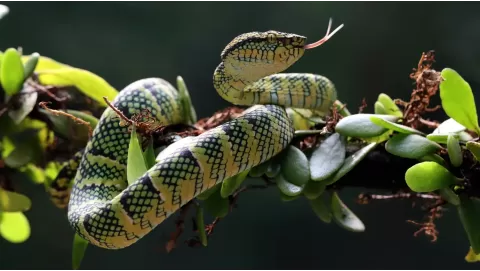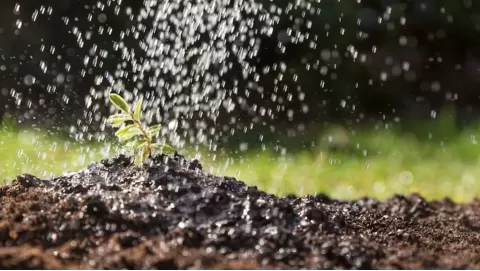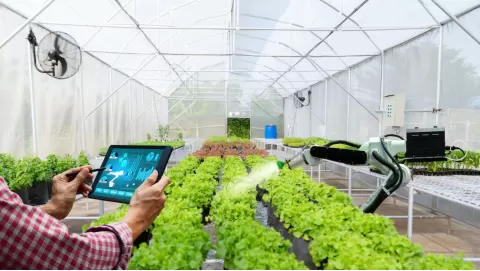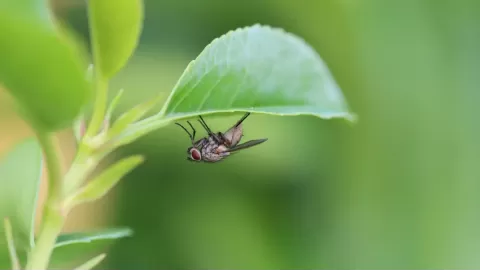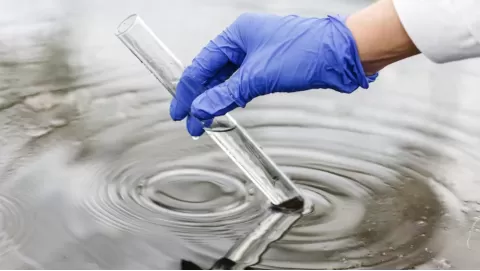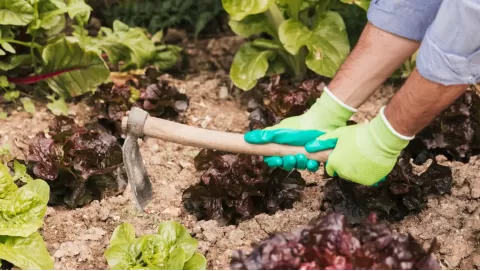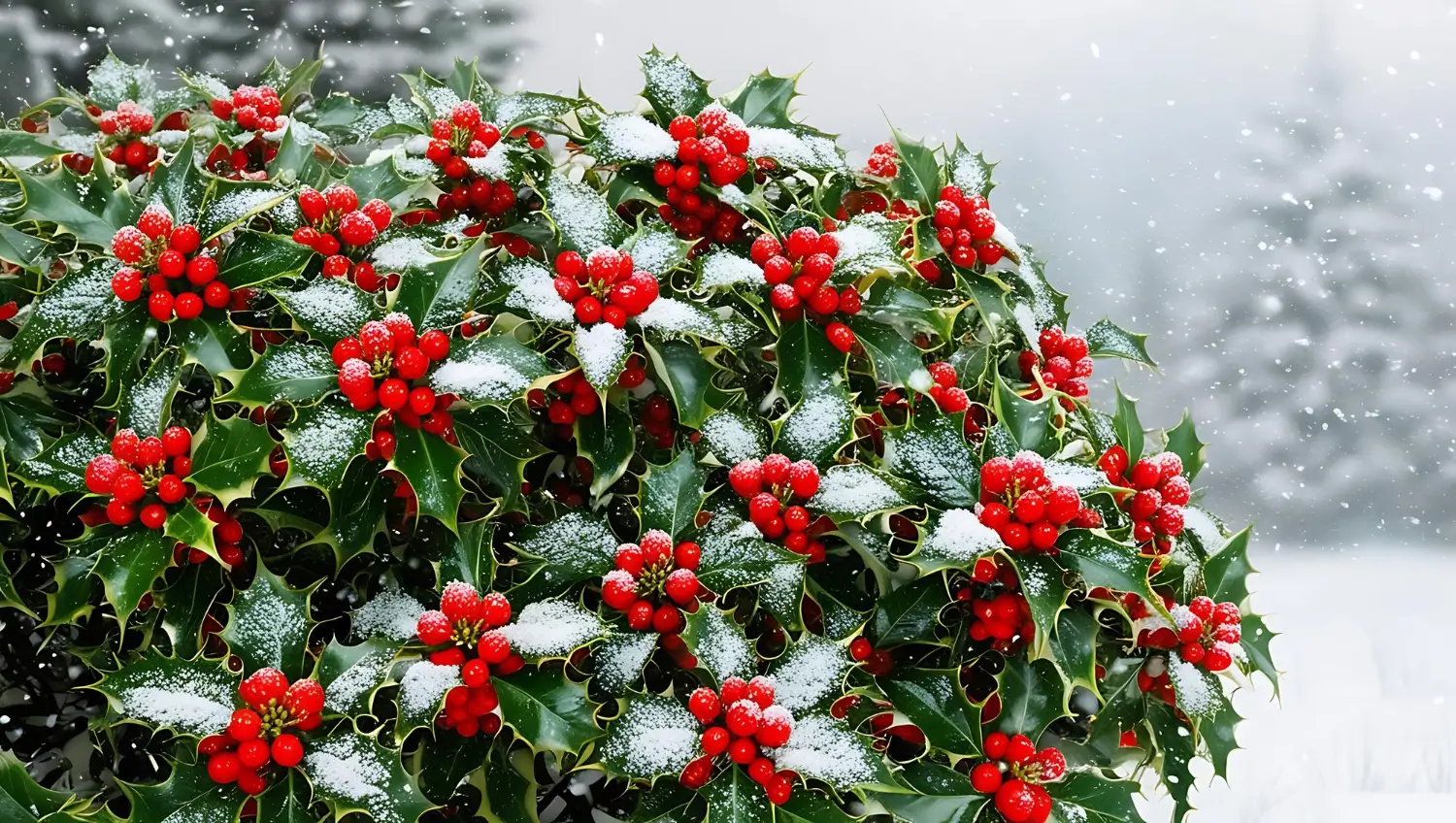
Nourish your holly bushes with holly tone fertilizer: A complete guide
Holly bushes are basically perhaps the most perfect and natural garden plants. They provide a colorful look to lawns or gardens. These husky, colorful bushes add a bit of brightness and class even during the coldest months, which is why they work so well as hedges, foundation plantings or just added decorative pieces. But they don't thrive in a vacuum; they need more than water and sunlight to support their vigorous growth and verdant leaves. Holly bushes, like other plants, have specific dietary requirements that need to be fulfilled in order to keep them healthy and thriving.
Fast Facts
- What: Holly Tone is an organic, slow-release fertilizer formulated specifically for acid-loving plants like holly bushes.
- Key Nutrients: Provides Nitrogen (N), Phosphorus (P), Potassium (K), and essential micronutrients, with an acidifying effect to suit holly’s needs.
- Type: Organic fertilizer certified by the Organic Materials Review Institute (OMRI), made from natural ingredients like feather meal and sulfate of potash.
- Benefits: Promotes root development, healthier foliage, and vibrant growth while naturally balancing soil acidity.
- Application: Ideal for holly bushes, azaleas, camellias, and other acid-loving plants. Apply twice a year, in early spring and fall.
- Eco-Friendly: Made from sustainable, organic materials, making it safe for the environment and wildlife.
Holly bushes require care and maintenance to keep them looking and growing their best. Failure to meet their nutritional needs can lead to yellowing leaves, slow growth, and very few berries. Holy Tone fertilizers make magic happen to feed acid-loving plants like holy bushes. For holly bushes, Holly Tone provides a slow-release formula and plenty of vital nutrients to guarantee a steady supply of essential nutrients.
Growcycle is a popular retailer in the United States. It offers different types of organic fertilizers to keep a vibrant and lush lawn, including Holly Tone fertilizers. This article serves as a helpful guide for growers and gardeners alike, covering everything they need to know in order to use Holly Tone fertilizer properly to ensure the long-term health and beauty of their holly bushes.
What is the Holy Tone Fertilizer?
Holly Tone is a high quality organic and natural fertilizer designed for acid loving plants. These plants include:
- Holly grass
- Azaleas
- Evergreens
- Dogwoods
- Rhododendrons
The slow-release formula for this fertilizer guarantees that your plants have an ongoing supply of nutrients. As a result, plants receive an alternative form of day in, day out nourishment without the threat of over-fertilization. Holly Tone is the one and only organic fertilizer that is eco-friendly. It is free of synthetic chemicals, which means healthier soil feeds plants.
One of the most vital features of Holly Tone is its balanced NPK ratio, with nitrogen (4%), phosphorus (3%), and potassium (4%) in the mix. This ratio is precisely tuned to meet the needs of holly bushes. Nitrogen promotes healthy leaf development and growth, foliage, and growing healthy leaves. Phosphorus encourages strong root growth, necessary to anchor the plant and to assure adequate absorption of water and nutrients. Potassium is also important, as it equips hollies and other plants to manage stress and adjust to their environment.
Along with these nutrients, Holly Tone fertilizer also includes many beneficial microorganisms, such as mycorrhizae and beneficial bacteria. Through decomposition of organic materials and enabling nutrient absorption, these microbes also improve the soil quality, ensuring long-term sustainability and soil health. They also combat harmful diseases and make for stronger, more stable soils, so plants can access water and nutrients more easily.
Why Do Holly Bushes Need Special Fertilization?
Holly bushes have special fertilizing needs that differ from other plants. To produce healthy leaves, strong roots, and the best berries possible, they need a balanced ratio of nitrogen, phosphorus, and potassium (NPK). Sometimes they're short on nutrients in the soil they grow in, so special fertilizers help provide what they need to thrive.
In addition, fertilising holly bushes spurs strong growth during their active season, helping them remain healthy and in shape. Healthier holly bushes are more resistant to problems as they are better able to combat diseases and pests. These fertilizers also allow the plants to cope with stress from adverse environmental conditions such as drought or bad soil quality, and thus keep them strong and full of life.
In addition, holly bushes are acid-loving plants that grow best in soil that has a pH of 5.0 to 6.0. Holly bushes are acid-loving plants, where the term acid-loving plants means plants that thrive best in an acidic habitat, and holly bushes fall under this category. In a mildly acidic environment, they can absorb nutrients better. This is why fertilizers like Holly Tone, which have the proper nutrient balance for acid-loving plants, are formulated to meet these needs.
Symptoms of Nutritional Deficiency in Holly Bushes
The following are the most common symptoms of nutritional deficiency in the holly plant or bush. These signs can help gardeners determine whether their holly bushes are missing some key nutrients and encourage them to correct the problem.
- Chlorosis, which is the yellowing of the plant leaves, usually due to nitrogen deficiency, is the most evident sign of nutrient deficiency in holly bushes. Adequate nitrogen means that holly bushes can produce sufficient chlorophyll for photosynthesis or the tinting of the leaves.
- If there is a deficiency of nutrients in the soil, the growth of the plant can slow down as well.
- The bright red berries are the distinguishing feature of Holly bushes. Lack of potassium or phosphorus can lead to fewer berries.
- Also, holly bushes may have weak root systems due to lack of nutrients like phosphorus.
Benefits of Using Holly Tone Fertilizer on Holly Bushes
Holy Tone fertilizer is a complete package that feeds Holly bushes nutrients. It has all the nutrients and micronutrients needed by a plant, and its benefits are:
Balanced Amount of Nutrients
Holly Tone Fertilizer provides N, P, and K in balanced ratios, in addition to trace minerals for holly bushes. Nitrogen promotes green foliage; phosphorus encourages strong root formation, which is critical in supporting the plant’s stability, and overall health. Potassium, on the other hand, is more resistant to environmental stressors like drought and extreme temperatures.
Holly Tone fertilizer also adds trace elements such as calcium, magnesium and sulfur, allowing holly plants to achieve optimum health, compensating for what typical fertilizers lack. Nutrients in balance will give your holly bushes everything they need to provide you with richly colored leaves and a good amount of growth, root included! Yet, if gardeners desire their holly bushes to produce an abundance of berries or thick, green foliage, Holly Tone provides the ideal ratio of nutrients to promote growth all year round.
Eco-friendly and Organic in Nature
The biggest benefit of Holly Tone Fertilizer is that it is organic. This promotes a more sustainable, eco-friendly approach to gardening. Unlike the synthetic fertilizers, which generally include some nasty chemicals, Holly Tone has no adverse additives that would damage soil structure or kill off the earthworms and microbes. Prominent decomposers in the garden include microscopic bacteria and fungi, which are necessary to sustain the health of the garden community by breaking down organic matter and liberating nutrients into the soil.
As it is organic-based, Holly tone fertilizer limits the risk of chemical runoff into the surrounding water bodies. It safeguards a broader ecosystem of rivers, lakes, and streams to be free from pollution. Holly Tone will enrich soil quality over the years and assist in holding water to make a prominent work for crops.
Slow Release Feeding
Holly Tone fertilizer is a slow-release formula, which is another useful advantage that provides a steady supply of nutrients to Holly bushes over time. Unlike chemical fertilizers, which provide a rapid fix and burn from oversupply, the nutrients in Holly Tone are released slowly, for the plant to utilize. Its gradual-release approach guarantees ongoing nourishment, supporting extended growth without exposing plants to the dangers of over-fertilization that can damage them.
Holly tone fertilizer uses a slow-releasing formula, thus holly bushes benefit from the use of this fertilizer less frequently, which will minimize maintenance to facilitate healthy, vigorous growth. That’s great for the busy gardener seeking reliable results without the need for checking in over and over on the plants.
Acidic Nature
This Holly Tone Fertilizer has an acidic pH range (5.0 and 6.0) that is suitable for acid-loving plants such as hollies. It consists of organic elements to aid in settling the pH level of the soil, thereby facilitating accessibility of key nutrients to the holly bushes. Holly Tone guards against common issues like chlorosis by maintaining the soil at the ideal pH. To keep your holly bushes healthy for life, balanced soil pH is important.
Holly Tone Fertilizer vs Other Organic Fertilizers
The significant difference between the Holly tone fertilizer and other organic fertilizers is that the Holy Tone contains almost an equal amount of N, P, and K. In contrast, other organic fertilizers don’t have equal amounts. The other key differences are listed below:
Properties | |||||
NPK ratio | 4-3-4 | 5-1-1 | Varies | 12-0-0 | 3-15-0 |
Nature and Working | Granular, Slow-release | Liquid, fast-acting | Work as mulch | Granular, fast-acting | Granular, slow release |
Suitable for | Acid-loving plants, like Holly, Azaleas | General purpose | Improve soil health | Leafy green plants | Phosphorous-loving plants, like vegetable roots |
Impact on environment | Eco-friendly | Eco-friendly | Very eco-friendly | Eco-friendly | Eco-friendly |
Advantages | Equal amount of nutrients | Easy absorption | Enriches soil with organic matter | High nitrogen content | High phosphorous content |
Disadvantages | May cause overfertilization | Need frequent application | Need in large quantity | Can cause plant burning | Slow acting |
Cost | Moderate price | Inexpensive | Low cost | Moderate price | Moderate price |
Best Holly Tone Fertilizer to Nourish Holly Bushes
Espoma 36# Holly Tone Fertilizer is the best all-natural plant food for acid-loving plants. – Holly, azalea, and rhododendron, if properly fertilized. The right nutrients will allow your plant to grow healthy and strong all season long. Importantly, Holly Tone is 100 percent natural organic, so you get the advantage of sludges and fillers not being a part of garden care.
Espoma’s Holly Tone has a slow-release formula that extends its application time, feeding nutrients slowly over time. This avoids the usual nutrient burn one can get with quicker-acting fertilizers and also the risk of washing away by rain or overwatering. Gardeners can rest assured their plants are getting even nutrition, with no fear of over-fertilizing. And Holly Tone does not leach away to feed plants for months after it is applied.
How and When to Apply Holly Tone Fertilizer?
The Holly tone fertilizers play an important role in the health and growth of the holly bushes and other holly plants. But the necessary steps must be taken after applying them to get the results you want. Here are step-by-step instructions for applying holly tone fertilizer to holly bushes:
1. Prepare the Soil
Soil and lawn preparation — the first steps before applying fertilizer. Trim the area around the holly plant. Fertilizer does not work on waste and lawn mowing. So to ensure that the fertilizer is coming in direct contact with the soil, remove any mulch, leaves, or other waste.
2. Choose the Right Amount of Fertilizer
The ideal time to use Holly Tone Fertilizer is when a gardener gets the best return on application. For a holly bush, this means applying this fertiliser in early spring and in fall. These are required during the plant's most active growth phases for holly bushes to reach the peak of their effectiveness.
Feeding Holly Tone fertilizer at the start of the growing season is like giving Holly the food that fuels the growth of new leaves and stems. Fertilizing in the fall, on the other hand, boosts root growth and sets a plant up for the stresses of winter. Spraying fall fertilization also helps a holly’s root system to store energy.
3. Apply the Fertilizer
Once the lawn is ready, spread the Holly Tone evenly over the plant's drip line (the foliage of the bush's outer edge). Never apply fertilizer directly to the trunk, as this can burn the roots. Then, lightly work the fertilizer into the soil 1-2 inches. It will reach the root zone, which will aid in the proper absorption of nutrients. And water that area well so the fertilizer does not dry on the soil surface.
4. Application Timing
The ideal time to use Holly Tone Fertilizer is when a gardener gets the best return on application. For example, if you are applying this for a holly bush, the time you need to give this fertilizer will be in the early spring and fall. These are seasons when growth is important for the plant, making sure that holly bushes receive those nutrients whenever they’re most capable of growing well.
Using Holly Tone fertilizer at the start of the growing season gives Holly the nutrition it requires to drive new leaf and stem growth. Conversely, mid and late autumn is when fertilizing supports root growth and braces a plant for winter’s rigors. Fall fertilization allows a holly’s root system to store energy.
5. Post Application
Apply Holly Tone fertilizer in the spring and fall each year for lush growth. That way, they’ll be getting all the right nutrients at the prime time of year to grow. Once holly bushes are established, gardeners can transfer to a twice-a-year schedule in spring and fall; these will leave for steady growth, nice leaves, and strong root systems for the entire year.
Additional Tips to Apply Holly Tone Fertilizer
Other tips for using Holly Tone Fertilizer:
- Mulching
A good layer of mulch around the base of the plant will help retain moisture and deliver more nutrients to the plant. After applying Holly Tone, gardeners should work in a layer of organic mulch over the root zone — shredded bark or pine needles, for example. This would absorb moisture and help regulate soil temperature to keep roots from drying out in hot weather. As the mulch decomposes, it, in turn, contributes even more organic matter to the soil and nurtures the habitat around holly bushes.
- Best Practice for Watering
Watering consistently means that the bushes get properly coated with nutrients from Holly Tone fertilizer. Fertilities it, you have to water it down so that they dissolve easily and pushed into the soil and become readily available for roots. Try watering them in the morning or evening (contact as late as possible, when the moisture in the soil has enough time to soak in instead of evaporating).
- Pruning
Pruning Holly bushes will keep them neat and improve their health and full potential. Eliminating old, over-crowded limbs creates more open air space and keeps disease from traveling deeper into the plant.
More importantly, pruning promotes growth, and the granules of Holly Tone fertilizer create better growth on more solid, healthier limbs and leaves. And on top of that, it will allow more plant material to be sent to sun exposure, promoting growth and making the fertilizer more effective.
Common Mistakes to Avoid While Using Holly Tone Fertilizer
Using Holly Tone fertilizer can offer wonderful results for acid-loving plants, if you avoid common mistakes. By doing so, that will make sure the plants have a chance to grow well without being harmed. Here are some common mistakes to avoid while using Holly Tone fertilizer:
- Over Fertilization
The most frequent error in using Holly Tone fertilizer by gardeners is over-fertilization. Some gardeners believe more fertilizer will help things grow faster, which is harmful to holly bushes. Over-fertilization can lead to nutrient burn, which is when the plant takes in excess nutrients, burning its roots and leaves. The damage may cause the leaves to yellow or wilt.
Too much fertilizer can also kill a plant or slow it down significantly in some cases. So, gardeners must use the appropriate amount of fertilizer accordingly, depending on the age of the plant. For young or newly planted bushes, start with small amounts and increase as necessary.
- Wrong Application Timing
Too early or late application of fertilizer can damage holly bushes and cause the plants to stress. The optimal times to fertilize are early spring, to promote growth, and the fall, to help the roots prepare for winter. If someone fertilizes in midsummer, it can create nutrient stress because the plant puts its energy into keeping water rather than absorbing nutrients.
Feeding at the end of fall can produce extra growth that doesn’t have the time to harden in before winter, putting the plant at greater risk of frost damage. Holly bushes thrive with less stress when you use the right timing.
- Failure to Look for Soil pH
When it comes to fertilizing, one of the most common mistakes all gardeners make is not paying attention to the pH of the soil before they go throwing fertilizer at their plants. For alkaline soil, Holly Tone fertilizer may still deliver important nutrients to holly bushes. So gardeners have to test the soil regularly to maintain the pH within the appropriate range.
If soil pH is too high, cultivators can drop the soil pH by adding sulfur or peat moss. Even high-quality fertilizers may not sustain the plants’ health if gardeners fail to control the soil pH. That’s why it is essential to test the soil pH before adding Holly Tone fertilizer.
FAQs
What plants do not like Holly Tone fertilizer?
Holy Tone fertilizer is not appreciated by alkaline loving plants such as lavender, sage, thyme, and many cacti and succulents. Most vegetables, including carrots and potatoes, and many fruit trees, including apple and peach, also cannot tolerate acidic soils.
What month should I apply holly tone?
Holly Tone should be used in early spring and fall. In spring, it promotes new growth; in fall, it aids root growth before winter. This makes sure to provide holly bushes with the necessary nutrients for healthy leaves and strong growth during the growing season.
Is Holly Tone fertilizer good for hibiscus?
Yes, Holly Tone fertilizer is suitable for hibiscus plants, particularly those that thrive in acidic soils. Its organic and slow-release formula will provide the plants with all of the nutrients necessary for healthy growth, productive blooms, and healthy root development. But you should use it according to the plant's needs to prevent over-fertilization.
Final Thoughts
Holly tone fertilizer is a good option to keep holly bushes, as well as other acid soil-loving plants, healthy and colorful. A unique blend of macro- and micronutrients, along with a balanced P-N-K ratio and beneficial microorganisms, provides these hardy plants with all the food required to thrive. By catering to their nutritional needs, gardeners can prevent holly bushes from suffering the common problems of yellowing leaves and poor berry production. This will produce luxurious leaves and strong roots.
Choosing Holly Tone will benefit the long-term sustainability of your holly bushes while being environmentally viable. When you use this fertilizer correctly and the vaccine properly, it will allow holly bushes to thrive, providing your landscape with beauty year-round. Explore Growcycle to buy Holly Tone fertilizer and contribute to a better and greener future.
Disclaimer: This material is for informational purposes only and should not be relied on for legal, medical, financial, or any other form of professional advice.






